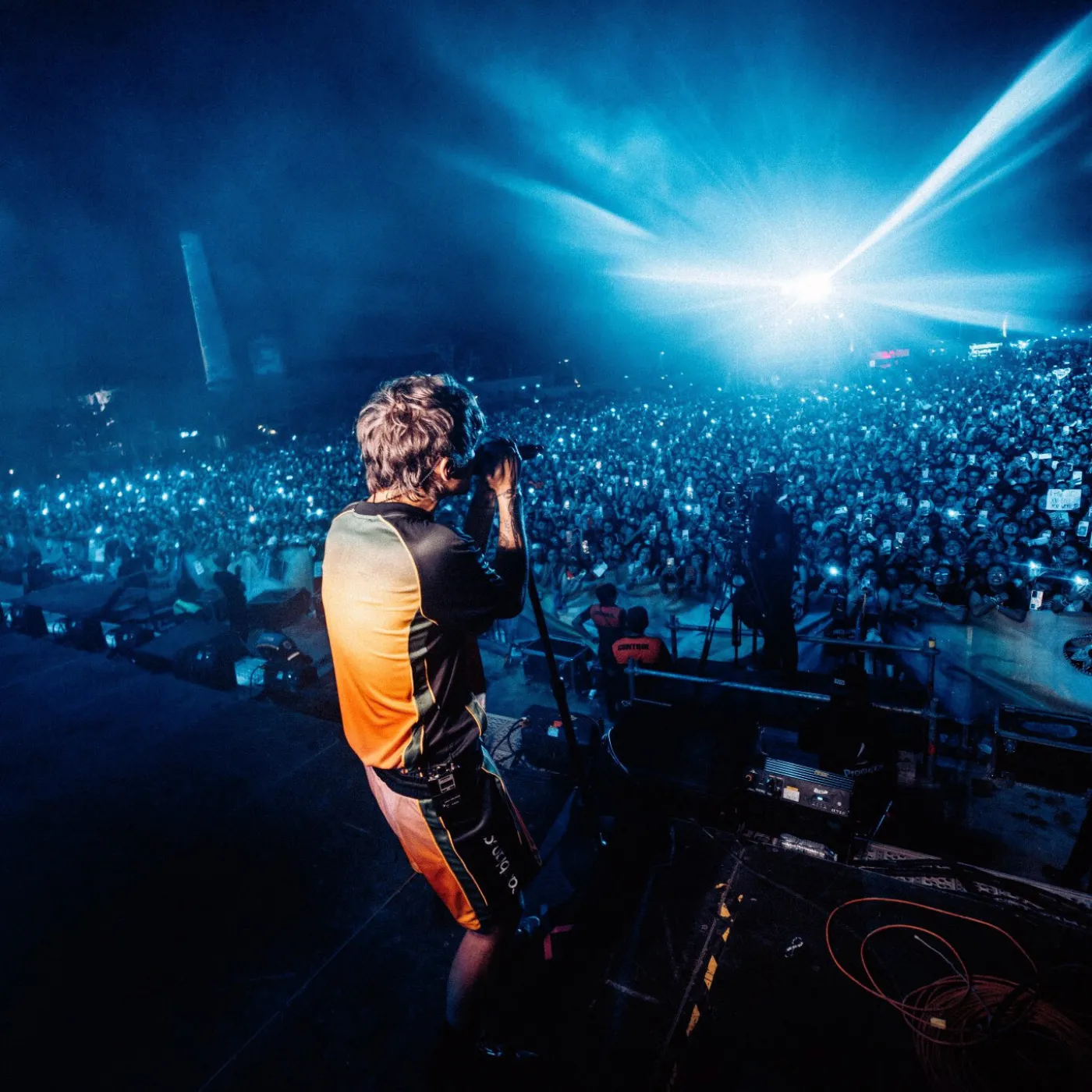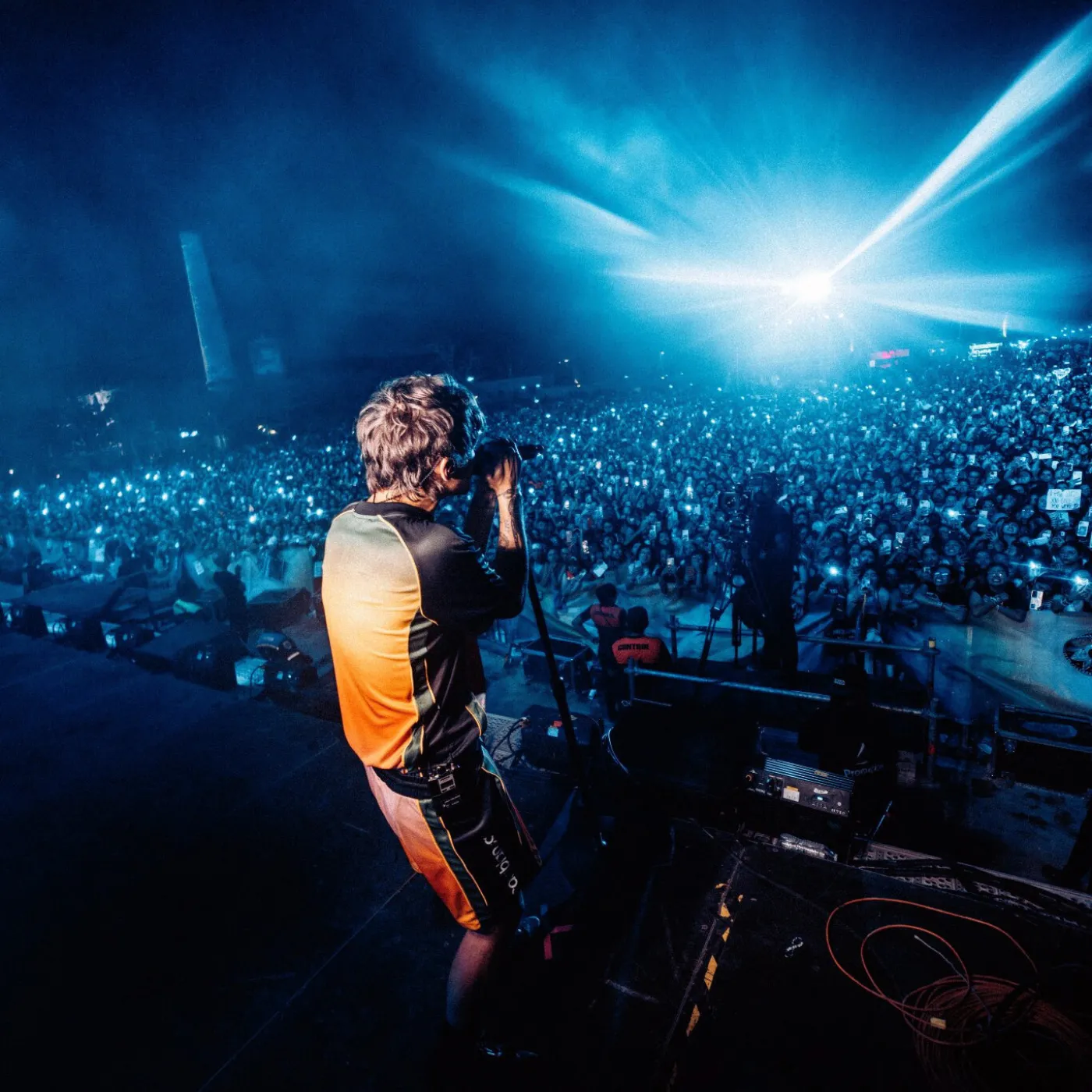

1 Year Since Louis Tomlinson’s Away From Home Festival and What Organizers Hid!
Exactly one year ago, the “Away From Home Festival” rocked the heart of Mérida, México, leaving a lasting mark not just on the city but on the global music scene. Led by Louis Tomlinson, the former One Direction star turned solo phenomenon, the event drew in thousands of passionate fans, local skeptics, global media, and industry insiders. But as the dust settled and the buzz faded, what truly happened behind the scenes became a matter of intense curiosity, speculation, and controversy.

While many headlines praised the festival’s success, others questioned its organization, financial transparency, and the real motivations behind the scenes. As we mark the anniversary of what was marketed as a breakthrough moment for Latin American music festivals, we peel back the layers of PR polish and investigate what the organizers never wanted the world to know.
The Hype Machine: A Promise of Something Bigger
When Louis Tomlinson announced the Away From Home Festival, fan communities worldwide exploded. Designed to highlight emerging talent while giving fans an intimate experience with Tomlinson himself, the festival set itself apart from traditional tours. Tickets sold out in minutes, especially in regions like Mérida, which rarely host international pop stars of his caliber.
Social media became ground zero for pre-event hype. Hashtags like #AwayFromHomeMerida and #LouisInMexico trended globally. Influencers, micro-celebrities, and even non-fans took notice. Everyone wanted a piece of what was promised to be the music event of the year.
The Reality: Organizational Strains and Fan Discontent
Behind the glamour, however, things were not as seamless as they appeared. From the start, logistical planning was flawed. Attendees reported delayed entry, poor signage, long lines for water in the hot Mexican climate, and last-minute schedule changes that left fans scrambling.
One fan posted on X (formerly Twitter): “We waited four hours in the heat just to be told the gates would open late. This wasn’t what we were promised.”
Insiders later confirmed that venue permits had been rushed and technical crews were understaffed. Security concerns also emerged, with multiple complaints about the lack of crowd control during peak performance hours. Local vendors, initially excited to benefit from the tourist influx, complained about being blocked from festival areas due to exclusive sponsorship deals.
The Louis Tomlinson Effect: Idol or Instigator?
Louis Tomlinson’s performance was undeniably the high point for fans. His setlist blended his solo material with nostalgic nods to One Direction, sending crowds into euphoric chaos. But his presence also triggered unexpected backlash.
Some fans accused Louis of overshadowing the lesser-known acts, whose time slots were poorly communicated and under-promoted. Others questioned whether the festival was truly about showcasing new talent or just another tool to rebrand Tomlinson’s image.
Anti-fans jumped on the chaos to mock Louis’ fanbase, sharing clips of technical glitches, awkward crowd moments, and dramatic fan meltdowns. Memes flooded Instagram and TikTok. One viral post sarcastically captioned, “Come for the music, stay for the panic attacks.“
The toxicity on both sides didn’t go unnoticed. Media outlets began probing into fan behavior and whether the fandom culture surrounding Tomlinson had become too intense for public safety.
The Economics of Chaos: Where Did the Money Go?
Despite the chaos, the festival grossed millions in revenue. Ticket prices ranged from modest general admission to VIP meet-and-greets with four-figure price tags. Merchandise sales were astronomical. Yet post-festival reports suggested financial inconsistencies.
Sources alleged that staff wages were delayed, artist payments were staggered, and local contractors were left unpaid for weeks. Rumors of a budget shortfall circulated online. The festival’s PR team denied all claims but refused to release financial breakdowns, fueling further speculation.
Some industry analysts believe the festival was used as a strategic investment vehicle to position Tomlinson as a brand-builder rather than just a performer. A risky move, especially if future collaborations or events in Latin America were on the line.

What the Organizers Hid: The Silent Failures
Multiple insiders, speaking anonymously, pointed to internal disorganization, lack of leadership, and poor local collaboration. Plans to livestream the event on YouTube were scrapped last minute due to “production issues,” according to a tweet that was later deleted.
Technical crew members spoke of broken communication between UK and Mexican teams. One technician shared, “We were told three different soundcheck times in one day. It was chaos.”
Meanwhile, environmental groups criticized the festival for its lack of sustainability measures. Despite heavy promotion of eco-awareness, no recycling bins were provided, and the site was reportedly littered with plastic bottles and waste post-event.
The Social Media War Zone
In the weeks following the event, social platforms became war zones of fan edits, angry threads, emotional thank-yous, and investigative threads. Fans defended Louis with #WeLoveYouLouis hashtags, while critics dissected every flaw.
Facebook groups with names like “Away From Home Survivors” popped up, sharing horror stories of dehydration, medical emergencies, and broken expectations. At the same time, other groups celebrated the festival as a “once-in-a-lifetime experience” they would never forget.
The Cultural Clash
Part of the tension came from a cultural disconnect. While Tomlinson’s team approached the event with a Western festival blueprint, local customs, government protocols, and fan behavior in México didn’t always align.
Security staff were unprepared for the level of emotional intensity from fans. Crowd surges were mismanaged. Medical tents were overwhelmed. Local authorities later admitted that the city had underestimated the scale and pressure of hosting a global pop event.
Redemption or Decline: What Comes Next?
Despite the chaos, there’s talk of bringing the Away From Home Festival back to Mexico. Whether that’s wise or reckless remains to be seen. The city of Mérida gained global visibility, but at a cost.
Louis Tomlinson has remained mostly silent on the backlash, only occasionally liking supportive tweets or thanking fans for their passion. Whether he will publicly address the criticisms or adjust his approach in future iterations of the festival is unknown.
But the questions remain:
Was this festival a sincere celebration of music and fan culture?
Or a strategically packaged, profit-first PR stunt that ignored local needs?

Legacy of the Festival
For better or worse, the Away From Home Festival in Mérida will go down as one of the most talked-about fan-led pop events of recent memory. It revealed the power of fan marketing, the fragility of event planning, and the delicate balance between idol worship and logistical reality.
In the end, it did what all memorable festivals do—it made people feel something. Whether it was joy, frustration, disappointment, or inspiration, one thing is clear: the festival may be over, but its impact is far from gone.
Stay tuned. The story of Louis Tomlinson, his fan empire, and the future of Away From Home is just getting started.


















